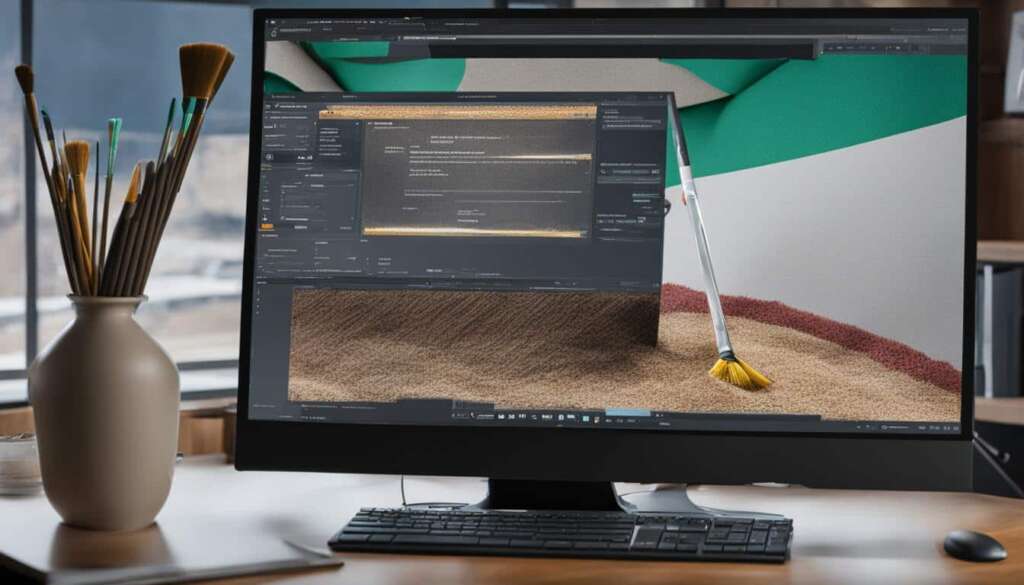Table of Contents
Welcome to our comprehensive guide on how to make your PC faster and optimize its performance. If you’ve been experiencing sluggishness or lag while using your computer, it’s time to take action and boost your PC speed. By following the tips and techniques outlined in this article, you’ll be able to increase your computer’s speed, enhance its performance, and enjoy a smoother computing experience.
In this guide, we will cover the essential steps you can take to optimize your PC and improve its overall speed. From tweaking operating settings to disabling unnecessary programs, we’ll provide you with valuable insights and practical instructions to make your PC faster than ever before.
To begin, let’s explore how changing power settings can have an instant impact on your PC’s performance. By adjusting the power plan from “Power saver” to “High performance” or “Balanced,” you can prioritize performance over energy efficiency and experience a noticeable boost in speed. This simple adjustment can make a significant difference in how your PC operates.
In addition to power settings, disabling programs that run on startup can also contribute to enhancing your PC’s speed. By preventing unnecessary processes from launching at startup, you can free up valuable system resources and improve overall performance. Our step-by-step instructions will guide you through the process and help you streamline your PC’s startup routine.
Furthermore, we’ll introduce you to the concept of system restore points and how they can be used to speed up your PC. System restore points allow you to revert your computer to a previous state, effectively undoing recent problematic installations. This technique can prove invaluable in resolving performance issues and bringing back your PC’s optimal speed.
Throughout this guide, we’ll provide you with practical tips and expert advice to help you optimize your PC’s performance and increase its speed. Whether you’re a casual user or a professional, these methods will ensure that your computer operates at its best and delivers a smooth and efficient computing experience.
Are you ready to make your PC faster? Let’s dive right in and get started on the journey to a speedier computer.
Change Power Settings
Changing power settings can have a significant impact on your PC’s performance. By switching from the default “Power saver” plan to a more performance-oriented setting like “High performance” or “Balanced,” you can instantly boost your PC’s speed and responsiveness.
Adjusting the power settings allows your computer to prioritize performance over energy efficiency, ensuring that it operates at its maximum potential. This is particularly useful for tasks that require instant performance boosts, such as gaming or resource-intensive applications.
To change the power settings on your PC, follow these steps:
- Open the Control Panel app on your computer.
- Select “Hardware and Sound.”
- Click on “Power Options.”
- Choose the desired power plan (such as “High performance” or “Balanced”).
- Exit the Control Panel.
Once you’ve made the switch to a higher-performance power plan, you’ll notice an instant improvement in your PC’s speed and responsiveness. Enjoy a smoother and more efficient computing experience!
Disable Programs that Run on Startup
Disabling unnecessary programs that run on startup can greatly improve your PC speed by freeing up valuable system resources. These programs, although they may be useful, consume memory and CPU power, slowing down your computer’s performance. Let’s take a look at how you can disable these startup programs.
To begin the process, you need to access the Task Manager. There are two ways to do this:
- Press Ctrl-Shift-Esc to open the Task Manager directly.
- Alternatively, right-click the bottom-right corner of your screen to open the Quick Link menu, then select Task Manager.
Once the Task Manager is open, navigate to the Startup tab. Here, you will find a comprehensive list of programs that launch when your computer starts up. These programs often run in the background, consuming system resources without your knowledge.
To disable a program from running on startup, right-click on the program’s entry and select Disable. This action prevents the program from automatically starting when you turn on your PC, boosting its overall speed and performance.
It’s important to exercise caution when disabling programs. Some programs are essential for proper operation, so only disable those that you deem unnecessary or non-essential. If you’re unsure about a particular program, consider researching it online or consulting with a knowledgeable source before disabling it.
Tip: Regularly reviewing and disabling unnecessary startup programs can help your PC run smoother and faster, ensuring that system resources are allocated efficiently.
Take control of your PC’s performance by disabling unnecessary startup programs. Not only will it improve your PC speed, but it will also optimize your overall computing experience!
| Benefits of Disabling Startup Programs | Process to Disable Startup Programs |
|---|---|
|
|
By disabling unnecessary startup programs, you can significantly improve your PC’s speed and performance. Take advantage of the Task Manager’s convenient Startup tab to easily manage and disable specific programs. Remember to exercise caution when disabling programs to avoid unintentionally affecting essential system processes.
Use System Restore Points
System restore points are snapshots of the PC at specific moments in time that can be used to return the PC to a previous state. This can be especially helpful in speeding up your PC by undoing any recently installed problematic drivers, software, or updates that may be causing sluggishness.
To access system restore points, navigate to the Control Panel and select System and Security. From there, click on System Restore. You will be presented with a list of available restore points. Simply choose the desired restore point and click “Finish” to initiate the restoration process. This will bring your PC back to its state at that specific point in time, helping to improve overall performance.
By utilizing system restore points, you have the ability to effectively return your PC to a previous working state and resolve any issues that may be slowing it down. It’s a powerful tool that can save you time and effort in troubleshooting and optimizing your computer’s speed and performance.
FAQ
How can I boost my PC speed and optimize performance?
Tweaking operating settings, changing power settings, disabling unnecessary programs on startup, and using system restore points can all help improve PC speed and reduce performance and system issues.
How do I change the power settings on my PC?
To change power settings, go to the Control Panel app, select Hardware and Sound, and then Power Options. Choose the desired power plan from “Power saver,” “High performance,” or “Balanced,” and exit the Control Panel.
Will changing the power settings instantly boost my PC’s performance?
Yes, changing power settings from “Power saver” to “High performance” or “Balanced” prioritizes performance over energy efficiency and can instantly boost your PC’s performance.
How can I disable unnecessary programs that run on startup?
Open the Task Manager by pressing Ctrl-Shift-Esc or right-clicking the bottom-right corner of the screen. In the Task Manager, go to the Startup tab to see a list of programs that launch at startup. Right-click on a program and select “Disable” to prevent it from running at startup. This can free up system resources and improve PC speed.
What are system restore points, and how can they help speed up my PC?
System restore points are snapshots of your PC at specific moments in time. They can be used to return your PC to a previous state. Going back to a previous restore point can help speed up your PC by undoing recently installed problematic drivers, software, or updates. To access system restore points, go to the Control Panel, select System and Security, and click on System Restore. Choose a restore point and click “Finish” to restore your PC to that state.













